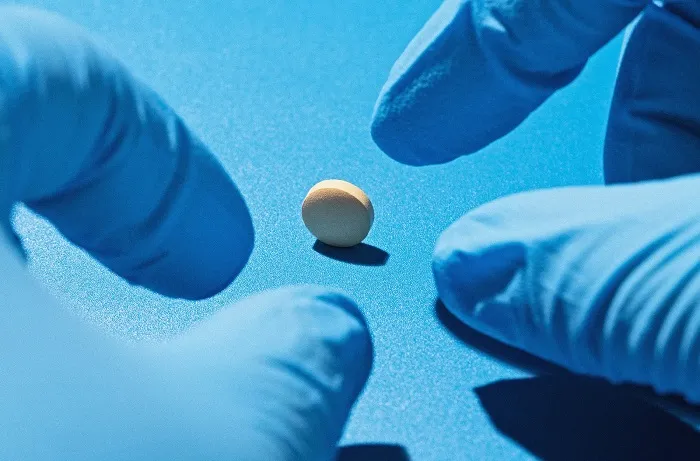A new experimental drug shows promise for helping people lose weight by a different method than popular drugs like Ozempic. Unlike Ozempic and other GLP-1 drugs that reduce food intake by making people feel full, this new pill may help burn fat without decreasing appetite.
GLP-1 drugs work by stimulating satiety in the brain and slowing food movement in the stomach. This combination helps people eat less and lose weight. But the new drug, called SANA, works by increasing energy expenditure, causing the body to burn fat.
How SANA Works: Creatine-Dependent Thermogenesis
SANA is derived from salicylate, a compound related to aspirin, and was developed by Eolo Pharma in Montevideo, Uruguay. It activates a process known as creatine-dependent thermogenesis. This process uses creatine—a compound naturally found in the body and known for helping build muscle—to generate heat and burn energy in fat cells.
“The beneficial effects of creatine on metabolism have long been known,” said Carlos Escande, co-founder and chief scientific officer of Eolo. Researchers first noticed decades ago that rats exposed to cold used a lot of creatine. More recently, scientists at Harvard discovered that fat tissue uses creatine to generate heat when exposed to cold temperatures.
Thermogenesis is the process by which the body burns energy to maintain a steady internal temperature. SANA stimulates this creatine-related pathway, increasing heat production and energy use in fat cells.
Results from Early Human Trials
In a Phase I clinical trial published in Nature Metabolism, the drug was tested on a small group of people. In the first phase, 17 healthy-weight participants took either a placebo or one of three doses of SANA. The drug was safe and caused no serious side effects.
In the second phase, 24 obese volunteers were split into groups receiving a placebo or low, medium, or high doses of SANA twice daily for 15 days. All participants stayed at a clinical facility and consumed a high-carbohydrate diet during the study.
After two weeks, those on the highest dose of SANA lost about 3% of their body weight. This amount of weight loss is similar to what people taking Ozempic or Wegovy achieve in the same period. Interestingly, participants reported no change in their appetite or feelings of fullness.
Advantages and Challenges of New Weight Loss Drugs
GLP-1 drugs, while effective, can cause gastrointestinal side effects and sometimes lead to muscle loss. They are also expensive, costing over $1,000 per month before insurance in the United States. Because of this, pharmaceutical companies are eager to develop weight-loss pills that are cheaper and preferred by many patients.
“There is still an unmet clinical need, and that’s where Eolo hopes to help,” said María Pía Garat, Eolo’s chief executive.
From Inflammation to Weight Loss: The Discovery of SANA
Eolo initially aimed to develop a drug to reduce inflammation linked to obesity and type 2 diabetes. During early tests in mice, the drug not only improved inflammation but also caused significant weight loss, despite the animals continuing a high-fat diet.
Over nine months, mice treated with SANA lost fat but kept their muscle mass. MRI scans showed a higher percentage of lean body mass compared to untreated mice.
Expert Opinions on the New Drug
Hans Schmidt, director of bariatric surgery at Hackensack University Medical Center, explained that past weight-loss stimulants affected overall metabolism and caused nervousness or increased energy. “This new drug seems to act specifically on fat cells at the cellular level,” he said.
However, Schmidt also noted that this study is small and that larger trials are needed to confirm these findings.
Next Steps: Larger Trials and Future Potential
Eolo plans a Phase II clinical trial later this year with about 100 obese participants. This trial will last 12 weeks and may take place in the United States. The company hopes SANA could be used alone or alongside GLP-1 drugs to improve weight loss results.
Angela Fitch, past president of the Obesity Medicine Society, noted that current drugs like GLP-1 agonists can achieve about 20% weight loss. While effective for some, others need more options. “We need more mechanisms that work on pathways other than appetite,” Fitch said. “New drugs offer the opportunity to do more.”
You Might Be Interested In:
- Taylor Swift Wedding Photos Spark Plastic Surgery Claims
- Jennifer Garner’s Honest Take On Injectables And Plastic Surgery
- Tammy Slaton Shocks Sister With New Look After Plastic Surgery


